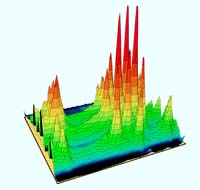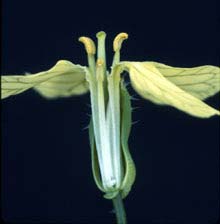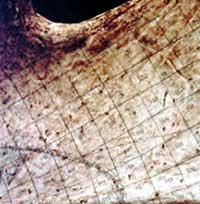Articles and reports from the Life Sciences and chemistry area deal with applied and basic research into modern biology, chemistry and human medicine.
Valuable information can be found on a range of life sciences fields including bacteriology, biochemistry, bionics, bioinformatics, biophysics, biotechnology, genetics, geobotany, human biology, marine biology, microbiology, molecular biology, cellular biology, zoology, bioinorganic chemistry, microchemistry and environmental chemistry.

Study opens door for faster, simpler methods of measuring carbon nanotubes
Building upon this summer’s groundbreaking finding that carbon nanotubes are fluorescent, chemists at Rice University have precisely identified the optical signatures of 33 “species” of nanotubes, establishing a new methodology for assaying nanotubes that is simpler and faster than existing methods.
In research published this week by Science magazine, a spectroscopy research team led by Rice Chem

Researchers at Leeds have identified the gene which gives us bigger brains – the evolutionary attribute separating us from other animals. The gene came to light during a study by Geoff Woods, Jacquie Bond and Emma Roberts into the disease microcephaly, in which people are born with a smaller brain (and head).
Dr Woods, a clinical geneticist at St James’’s, noticed a high instance of microcephaly among his Pakistani patients. He found that, in the 1960s, a dam project in Pakistani-c

Think of it as finding the ultimate genetic engineers.
A plant biologist at Michigan State University has harvested clues about genes that coordinate the development of plant parts that must work together.
The work, published in the Nov. 28 issue of the British science journal Nature, points to a single mechanism that regulates the growth of related parts in flowers – kind of a genetic project manager.
“This is why we’re not just a discombobulated collection

Nearly 40 years ago scientists were startled to discover that the eye, far from being a still camera, actually has cells that respond to movement. Moreover, these cells are specialized to respond to movement in one direction only, such as left to right or right to left.
Now, in a paper in this week’s issue of the journal Nature, biologists at the University of California, Berkeley, have finally detailed the cellular circuit responsible for motion detection in the eye’s retina.

Artificial cells, or liposomes, are a promising area in biotechnology and nanotechnology, and now they have a new power source. An experimental finding has revealed a new method for converting light to stored chemical energy within the cells.
A team headed by Arizona State University chemistry professors Thomas Moore and Devens Gust has developed a light-powered molecular pump that shuttles calcium ions through a phospholipid membrane – calcium ion pumping that resembles various key cellula

Researchers examine aging in wild insects for first time
A unique insect has given researchers the opportunity to study aging in the wild for the first time.
“Aging – or senescence – has been seen under controlled conditions in the lab, but never before in insects living in their naturally evolved habitat,” says U of T zoology doctoral candidate Russell Bonduriansky. “Our study of antler flies shows these animals do age in the wild.”
Bonduriansky and co-researcher C